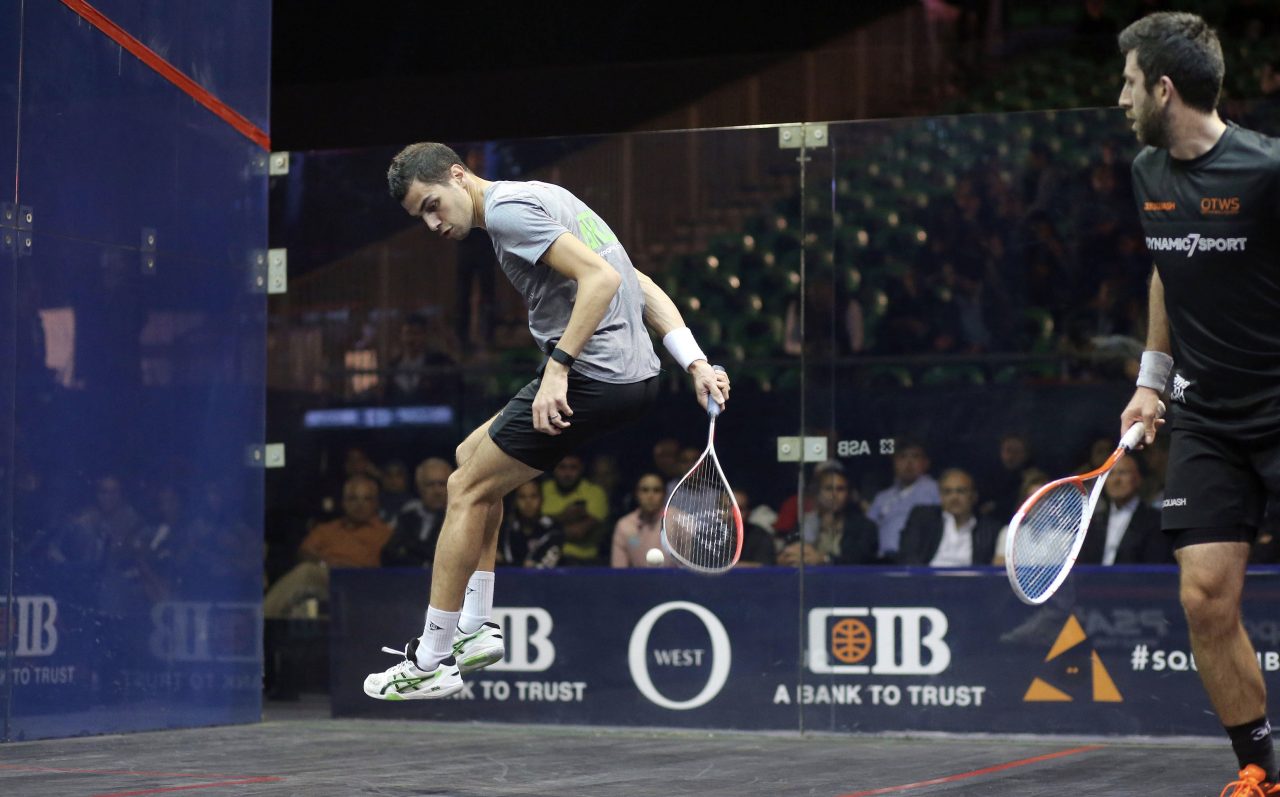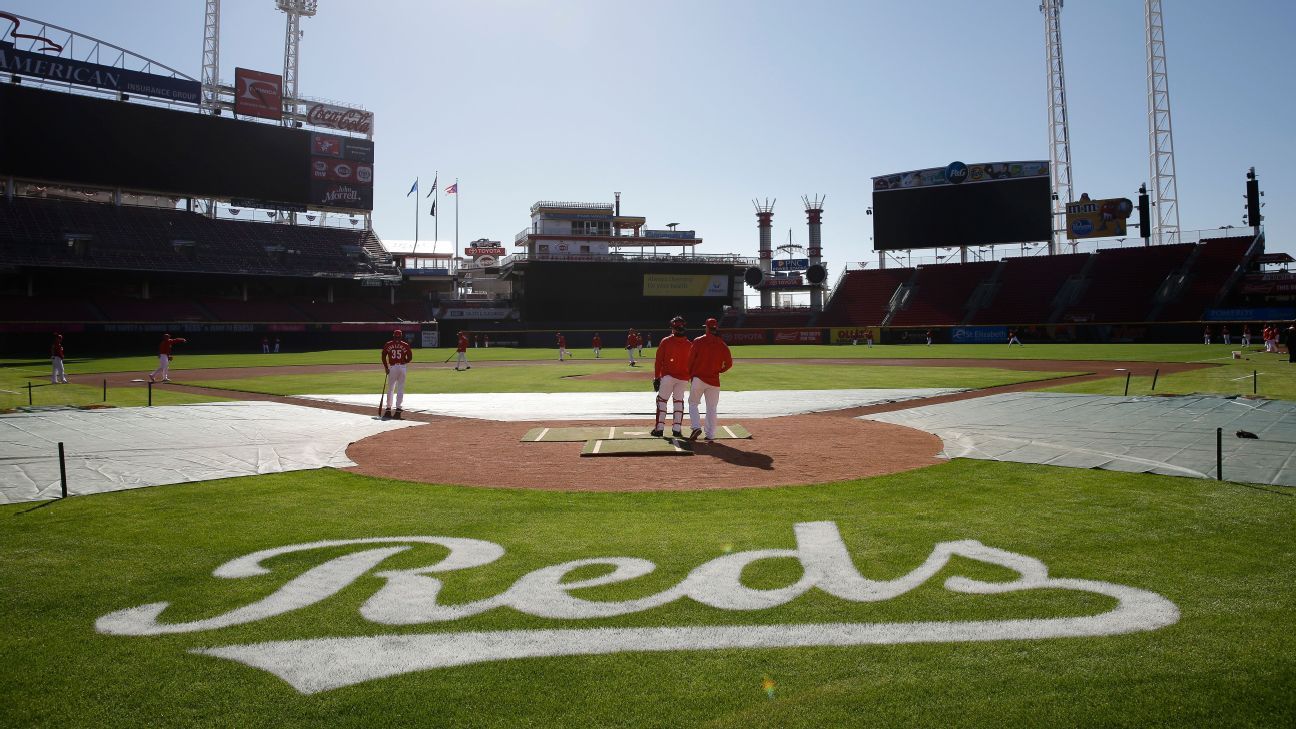
Think how quickly Ali Farag’s brain has had to work to make this shot behind his body possible against Daryl Selby! Picture courtesy of PSA.
‘Your memories are stored in your brain, not your muscles’
By TONY GRIFFIN – Squash Mad Coaching Correspondent
Muscle or cell memory are terms that I had heard of but didn’t really understand. Some months ago I was introduced to the concept in more detail. In essence, the idea is that every movement or action we make is recorded within us, more probably in our subconscious.
The more I thought about it, the more I became aware of the implications this could have in our learning processes, especially in relation to the way we train and the retention of new skills. I started questioning if this concept is related to why low numbers of repetitions is proving to be more beneficial in training.
Coaches aim to get players to organise their bodies and their footwork into a functional shape at that one special moment when their racket strings make contact with the ball.
Essentially, that’s what much of coaching is all about: that one magic moment of contact with the ball.
However, in the heat of a match you may well end up scrambling from back left to front right chasing a tight boast and you are in fight or flight mode, doing anything you can to simply get to the ball.
Your brain then makes this the absolute priority: Get to the ball! Don’t let it bounce twice!
In those moments, all of your pre-planning goes out of the window… or does it?
Does the knowledge (and muscle memory) from so many matches and training sessions still kick in so that your brain arranges some semblance of order so that you can move across the court, extend your arm with a racket on the end of it, and hit the ball before the death knell of that second bounce? Of course it does!
European Under-13 number one Ona Blasco Puig, one of Tony Griffin’s pupils, moves across the court as she gets ready to play in the forthcoming US Junior Open. Picture by Nathalie Goossens Photography.
In June of this year I was selected to present my work in the FIEP World Congress – “Sports, Physical Education and the Scenic Arts as Tools for Change in Society”.
In the speakers room I met one of the main speakers Richard Bailey (he leads research at the International Council of Sport Science and Physical Education) and we talked about this cell memory idea. He explained to me, with scientific detail, that these memories are stored in our brains and not in our cells or muscles.
I am not qualified to defend either one of these ideas about where we store the memories of all of our actions/movements but I was relieved that there is a consensus that they are stored somewhere…
This idea has led me to ask whether all the movements and shots we do in our training sessions are going to be useful sometime in a match? Is the quality, the sensation, the body position, the movement, the accuracy, the focus etc what want to reproduce in our matches?
And the next question was: How should we train so that what we put into our body memory is more beneficial for our matches?
So imagine if all the repetitions of a particular shot in a routine go into a memory box which we then open when we need that specific solution or shot in a match.
If we have done hundreds of repetitions, some good, lots average, some not so good, some without concentration, some thinking about what is for lunch, etc, what happens if we have very little time when we look into the memory box for that shot we need?
Do we take the first one we find? Is it easy to find those good shots among all the others, or do we chose anyone of them because of the rush?
If we have done fewer repetitions and because of this, more of them are good shots, we have been focused on our body position, aiming for the target area, and even practiced changing from one shot to another. In this case what happens when we open our solutions box? Do we have more chance of choosing a better shot and being able to execute it?
Tony Griffin delivers his lecture
The clearer the sensation is within the player, the more chance they have to reproduce the shot well. This brings me to the question we are working on recently which also related to body memory. If all the details and sensations of the shot we take from our memory box are very clear, does this help our body self-organise towards that solution?
Visualisation is an accepted sports psychology practice used by many athletes to help them achieve their goals. By giving clarity to their goal, the body and mind self-organises to achieve their objective.
I have seen professional players stand on the T and stare at the front wall, then ghost a few imaginary shots with their hands on each side of the T. Many of us may think that all squash courts are the same, with white walls and a tin.
But there could be subtle changes, say, in the colour of the adverts on the tin (or even the height of the tin). Lighting, too, can be different from club to club and court to court. The players doing these visualisation exercises are making their brains feel at home in their new surroundings. Every little bit of sensory awareness helps towards the delivery of a game plan.
Part of our Gevolution process is similar. We help the player to hit the ball very well, often from a static position when necessary. We now know they cannot hit the ball well many times in a row, so, after a few well-hit shots, we change position or shot. Those good sensations of hitting the ball well are then stored inside their memory box.
Here’s an example. We see the opportunity to play a winning drop shot in the front of the court. Like visualisation, if we are clear about how we are going to play the drop shot our body self organises towards the clear solution from the memory box.
If we are not clear about how we want to play the drop shot, the path to the shot can be filled with various degrees of doubt or insecurity that can interfere with our ability to play the shot well. It appears that our body organises itself depending on the clarity it receives when it opens the memory box.
Now it is inspiring for me as a coach when I see a player hit the ball like a good player just once and I happily change shots or exercise.
And, because of the fantastic sensation of hitting ball well, the player wants want to play more. It is like opening the door for a new path to follow. That’s the endless beauty of coaching. There are so many doors to open!















 Phone: (800) 737. 6040
Phone: (800) 737. 6040 Fax: (800) 825 5558
Fax: (800) 825 5558 Website:
Website:  Email:
Email: 






